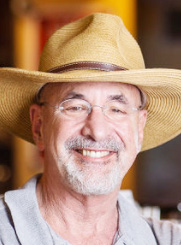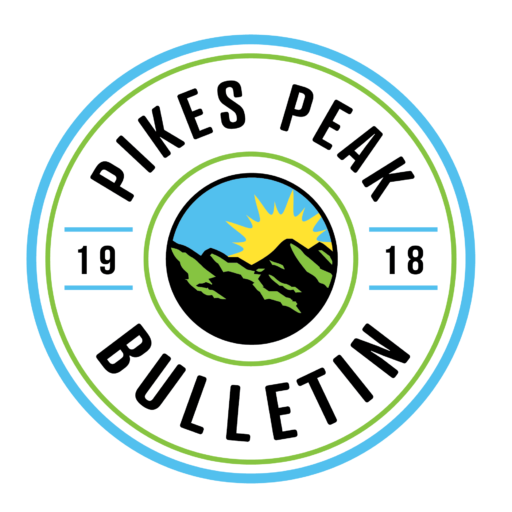Without a major wildfire that wipes out a large portion of our mountain backdrop or a major recession, the Pikes Peak Region will grow to a million and Colorado Springs to 750,000 people over the next two decades. And our current 25 million tourists who visit our region every year will likely increase as well.
Our urban canopy deficit (only at 19%), our massive installation of heat-producing and electric-consuming air conditioners (75% saturation of all buildings), and our predominance of dark surfaces in our built environments will only make us hotter as our climate warms significantly due to climate change.
Growth in population and tourism will make our current traffic congestion nightmares and air pollution even worse. And it’s just a matter of time before our Colorado River basin water is restricted for landscaping (40% of our water use is currently used for landscaping). In other words, with no changes, our local landscapes will be more barren landscapes than they are today.
Here’s what we must do. First and foremost, we need to find every way possible to get our residents and tourists out of their vehicles. I wish that public transportation was the answer. But we just don’t have the population concentration to make it successful.
What we can do is direct every dollar we can to building connecting bicycle trails and greenways throughout the region, so our citizens and tourists have an alternative to using their vehicles. TOPS Open Space money should be used for buying land adjacent to trails as well as the TOPS trails monies as well. Federal and State transportation dollars and grants should be aggressively pursued through the Pikes Peak Area Council of Governments. The Colorado Springs City Council should place in front of voters a much bigger allocation of the Pikes Peak Regional Transit Authority one cent sales tax for voter approval. And a private fundraising effort should be launched like the one that was done for the Pikes Peak Summit House a few years back. There is nothing more important for our future than an accelerated effort to build an alternative transportation system for bicycles, electric bicycles and scooters. Our outdoor loving citizens and tourists will love it. So will our local environment.
Next, we need to ticket all automobile and truck air polluters. Those smoking tail pipes on trucks and cars need to be off the roads forever. Not only are they creating more ozone pollution (which we are at non-attainment for), but they are causing more lung problems for our citizens for no good reason. El Paso County has the highest children’s asthma rate in the state.
Then, we need to create a no-idling vehicle culture in our region. No idling delivery and construction trucks (except ones with refrigerators or ones that need the power for construction), and no idling at drive-throughs. Idling vehicles are an unnecessary air pollution creator.
Next, think shade: plant shade trees wherever there is natural water to keep them green, like near our waterways and in detention/retention ponds. Use what landscaping water we have left from our Colorado River Basin exchanges in the future, for watering shade trees, not big lawns that belong in Kentucky.
Then, we need to cover every parking lot possible, ideally with solar panels, to generate electricity and keep our heat down. And we should require all new rooftops and pavement to be light colored to reflect not absorb the sun. When new road lanes are built or old ones repaired, lighten them up as well. Houston reduced its heat island effect by 30% by simply requiring lighter colors.
Another low hanging fruit is requiring the right kind of new construction and retrofitting old buildings as well. New buildings should employ the principles of low impact development, rain barrels, rain gardens and permaculture to keep moisture in the soil. And yes, when we do want to landscape, we should require less-consumptive native and adaptive plants.
Deciduous shade trees should be planted on the south side of all buildings to provide shade during the hottest months. Large adducts should be restricted, and heat pump/exchanger cooling systems installed instead of traditional air conditioning that pour hot air into the atmosphere. All the above should be done to any renovations of the existing built structures.
Now you are asking yourself, how are our home and commercial property owners going to be able to afford all these expensive retrofits? And won’t these practices just make our already expensive housing even more expensive?
Colorado Springs Utilities should borrow money to loan to their customers for these retrofits and for new construction. They can get paid back with interest out of customer energy savings. CSU has an A- bond rating and good access to bonding monies. And instead of borrowing money to build expensive new electric generation, they could borrow money to help ratepayers install the right appliances and air conditioning, insulate and properly catch water and landscape all new buildings. And they can do the same to retrofit and re-landscape existing properties as well.
Most of what needs to be installed will pay back in energy or water savings in five years or less. Then the customer will enjoy those savings for many years to come.
The other major solution that needs to be in place is that all new construction needs to have all electric appliances and heating, not natural gas (electrify). And the same is true for existing buildings. Degasifying is important because not only is natural gas a large greenhouse producing gas, but it is dangerous to breathe in a kitchen or other enclosed spaces. And everyone is predicting it will become more and more expensive with regulations looming in the future.
I know that many of the suggestions/solutions above feel like big challenges. Some may say it is government overreach. But they are critical to keeping our quality of life tolerable as we deal with the increasing heat and air pollution challenges of climate change. We are 2.5 degrees hotter than other Front Range cities. Southeast Colorado Springs is 6-8 degrees hotter than the rest of the city. And that part of the city already has a 13-year less life expectancy than the rest of Colorado Springs.
Finally, less water consumptive landscaping will be critical to our region being able to keep our incredible ice cold, and Colorado River water coming out of our faucets. And wouldn’t it be a great marketing tool for the Pikes Peak Region to add to being Olympic City USA if we were also Green City, USA or Healthy City, USA?
We can do it.
Richard Skorman is a former four-term Colorado Springs City Council Member, Vice Mayor and Council President. He was one of the authors and co-directors of the City’s Trails, Open Space and Parks Initiatives that was successfully approved by voters three times. He and his wife Patricia co-own and operate Poor Richards/Little Richards and Rico’s, and he is the founder of Richard’s Rubbish Roundup.


